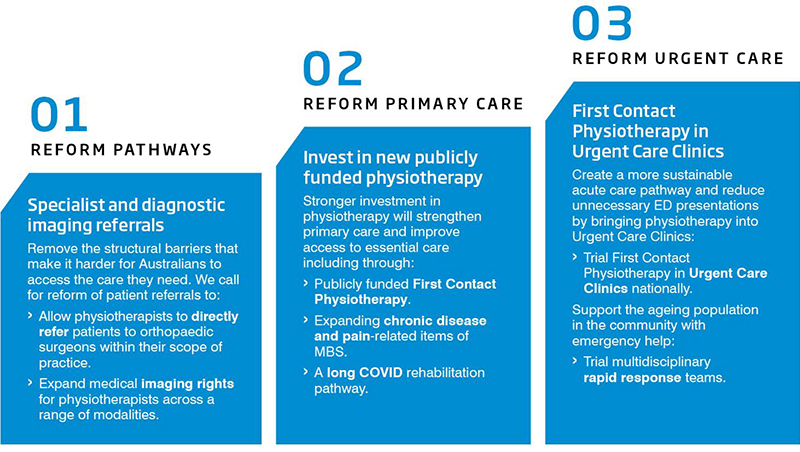
Budget2023: Essential funding for healthcare paves the way for improved patient care

Our response to the Federal Budget delivered by the Treasurer on Tuesday 9 May 2023.
The Australian Physiotherapy Association (APA) welcomes the Federal Government’s commitment to quality health care reform through measures that enable multidisciplinary care, invest in more Urgent Care Clinics and provide a much-needed boost to Medicare:
- The investment of $79.4 million over four years to strengthen the role of allied health in multi-disciplinary teams within Primary Health Networks (PHNs) will assist in improving the management of chronic conditions and reduce avoidable hospitalisations.
- The commitment of $445 million over five years to increase funding for the Workforce Incentive Program (WIP) is a welcome investment into allied health to support a flexible and sustainable physio workforce in the future.
- Funding allocated to additional Urgent Care Clinics (UCC) will allow the APA to continue work in this space to advocate for the inclusion of physiotherapy into these clinics to improve the quality, access to and value of care for Australians.
- The commitment of $6.1 million to support allied health professionals to develop connections to My Health Record will enable efficient sharing of information and provide for a smoother patient journey.
More to come.
Read our full media statement.
Our 2023-24 Federal Pre-Budget Submission
We're breaking down our 2023-24 Federal Pre-Budget submission, including the top 3 priority reforms, care priorities for underserviced demographics, new models we hope to see funded and a plan for the next generation of the physiotherapy workforce.
Our top three priorities

Physiotherapy is essential care for the close to 7 million Australians who live with musculoskeletal conditions. Too many Australians are without access to prevention, early detection and quality care. And for too many, this means that they have to live with chronic pain. Investment in publicly funded physiotherapy will advance health, improve care and increase value.
Read the whole APA Federal Pre-Budget Submission
Follow along to learn what we want to see this Federal Budget to contribute to high-value physiotherapy care for all.
